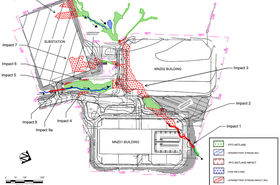Spending on data center delivery is expected to exceed US$200bn worldwide by the end of this year according to the latest Statista data, and this trend is likely to continue for the next five to ten years. This demand is causing a shift in the ways that data centers are delivered, with an increased deployment of scalable solutions, given their ability to provide flexible space and speed of delivery.
Using this approach, data center providers can obtain a foothold in the market, prior to committing the full capex of an entire project and gain valuable competitive advantage.
In many cases, the focus with hyperscale facilities is on constructing all phases of the entire data center upfront. A key associated risk, therefore, is having a project completed too far in advance of the operator’s requirements for full capacity and incurring the operational costs, reducing whole project life cycle profitability. An additional consideration is the rapid pace of technology innovation, meaning that infrastructure can age quickly, even before the project is realized. Scalable builds, therefore, also provide opportunities for hyperscale developers to minimize some of these risks, building in phases. This type of scalable approach also enables these large developers to adopt a more agile approach to entering new geographies and achieving a competitive advantage.
Scalable solutions are particularly attractive for colocation and edge data centers, which are enjoying massive growth at present. These smaller facilities can achieve a faster return on investment with more efficient funding, scaling facilities to meet demand in a linear fashion. Edge demand is expected to nearly triple by 2024, while colocation market value is expected to grow to $130 billion by 2026.
Right-sizing delivery, procurement, and timeline to demand
For most data center providers, capital expenditure is significant at the outset. Balancing such outgoings with accurately forecasted fill rates will determine whether a hyperscale or scalable delivery methodology is the best route for a project, or if a colocation fit-out could be a viable solution. Data center providers will take different approaches, taking into consideration factors such as markets, regions, design standardization, program capacity, capex availability and sales pipelines.
Models that incorporate procurement strategies, such as OFCI (owner-furnished, contractor-installed critical equipment), have meant that providers can utilize a more strategic portfolio-level approach, often developing important partnerships directly with the vendors. This has been vital during recent and ongoing supply chain challenges by having lead time and pricing agreed in advance, thus helping to facilitate just-in-time delivery of a repeatable DC product.
Assessing whether scalable solutions are right
While scalable solutions have many advantages, they are not right for every project.
Where speed to market is a key consideration, scalable deployments may enable providers to achieve a competitive advantage. For example, depending on the size and capacity, the first phase of construction could be on the market anywhere between 6-12 months ahead of the entire building’s IT capacity. That allows for a faster timeline to meet client demands.
On the other hand, reduced economies of scale, in conjunction with labour demand shortages, can mean that there are insufficient resources to complete DC projects due to other regional demands. Given the material price inflation (and general inflation) and volatility seen in recent times, this approach can lead to higher costs and a lower level of cost predictability over the project duration. Soft costs can also be significantly higher in many cases due to longer project schedules for completing the entire DC.
In conclusion, scalable facilities certainly provide an attractive option for data center providers striving to meet the growing demand across new and existing markets. Yet when considering the most appropriate build, providers need to consider how they can best maximize project viability and ensure the total cost of operation and capex will provide a long-term return on investment.
Taking all the above considerations into account will help both investors and developers arrive at the best decisions for a project that meets the needs of customers at the right time and in the right place





